Two more rising U.S. women
Kaitlin Donner held off the fast-closing fellow U.S. competitor Renee Tomlin by an official 2 seconds margin to finish 1-2 at the New Plymouth World Cup sprint in New Zealand on March 21. The win was Donner’s first World Cup victory and Tomlin’s first World Cup podium finish.
It was also notable for their run splits – Donner’s second-best was 16:54 and Tomlin’s race-best was 16:37. While the races were thousands of miles apart and in different conditions, Tomlin’s 5k run split was faster than every single women competitor at the Abu Dhabi World Triathlon Series event – with the lone exception of superstar Gwen Jorgensen. Also, Donner’s run time was faster than all but seven of the elite WTS finishers. Against the rest of the New Plymouth field, Tomlin was 32 seconds faster than the 3rd place finisher and Donner was 15 seconds better.
What this portends is that both of these young women have serious talent. And when they get all three legs of the triathlon similarly polished, they should be contending for WTS podiums – just as fellow U.S. triathlete Katie Zaferes earned her second straight WTS podium, with a 2nd-place finish to Gwen Jorgensen at WTS Auckland last weekend.
With their New Plymouth success, Donner and Tomlin are joining Katie Zaferes, Jessica Broderick, Lindsay Jerdonek, Erin Jones, Kirsten Kaplan, and Tamara Gorman as rising stars following in the footsteps of established U.S. stars Gwen Jorgensen and Sarah True.
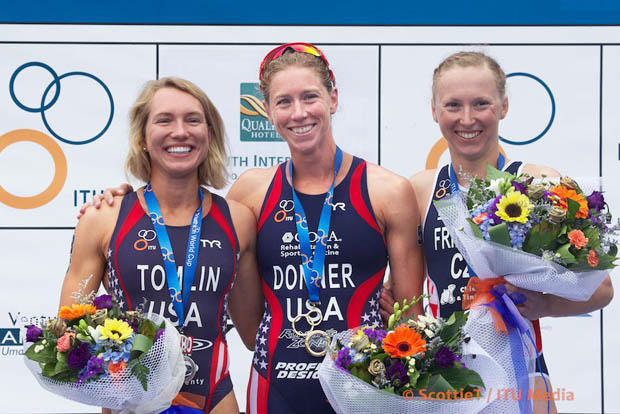
Kaitlin Donner
Kaitlin Shiver Donner was born in Melbourne, Florida in 1990 and attended the University of Florida where she graduated in 2011 with a degree in applied physiology and kinesiology and earned a doctorate in physical therapy in 2014. She did her first triathlon at the age of 12.
Slowtwitch: Congratulations on your first ITU World Cup win. What does this victory mean to you?
Kaitlin Donner: It was validation for the sacrifice and hard work I have put into the sport, but most importantly it means the sacrifice my entire support team has made for me over the years. My husband, my parents, my sisters, my coaches and all the people in my community that have supported at some point along the journey are part of it — that’s what makes it special.
ST: How much confidence does this give you in your dream to make the 2016 Olympic team?
Kaitlin: It gives me confidence in the sense that I know I am doing the right things in training and learning how to race smart. The US women are the strongest we have ever been and that’s very exciting thing to be a small part of that.
ST: Before this win, what were some of your most significant performances in ITU racing?
Kaitlin: I was 4th at U23 Worlds in 2011, 2nd at Cancun WC 2012, along with a series of top 20 WTS finishes last year.
ST: What did you think of your two 17th place finishes in World Triathlon Series races last year?
Kaitlin: My WTS 17th place finishes last year were decent, but my training had indicated I was more fit than the results. I finished my doctorate of physical therapy degree in April of last year that impacted training and racing a lot. I wasn’t able to get the base I needed during the off season because I was completing internships of 40 hours/week in the PT clinic, and I don’t think I was able to recover enough to absorb the hard training I was doing. Both races were great learning opportunities and a chance to race the best in the sport.
ST: Some people think that U.S. women are the deepest in young talent on the ITU circuit. Why is this happening?
Kaitlin: I think USAT has done a great job of identifying talent at the collegiate level through the Collegiate Recruitment Program. Both Katie [Zaferes] and Gwen [Jorgensen] came up through those ranks, and their success along with Sarah [True’s] 4th at the 2012 Olympic Games has raised the bar for all the US women. USAT has also done a great job with creating a developmental pathway for juniors in the sport to transition to U23 then the elite level. I had the opportunity this off season to mentor at a USAT junior women’s camp where I was in awe at the resources and knowledge available to young athletes, along with the raw passion they exuded for the sport.
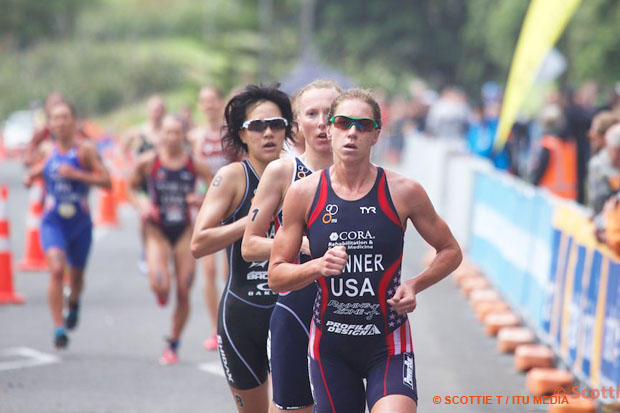
ST: What is your strongest discipline in triathlon and why? Which is your weakest and why?
Kaitlin: I think after almost every race I would identify different strengths and weaknesses. What I love about the sport of triathlon is how it’s constantly changing. Strengths and weakness can vary throughout and between seasons depending on the course, conditions and competition.
ST: You have a very athletic family. How much did they inspire you and support you?
Kaitlin: My parents Kathleen and Randall Shiver were (and still are) both very active, and my sisters Ashley and Nicole and I grew up watching them compete in marathon running. My sisters and I were never forced to compete, but the rule of the house was we had to do something active after school instead of sitting on the couch. I ended up swimming competitively quite young, and took up running in high school. I remember begging my Mom and Dad to go run with them – I did a 6 mile run with my dad when I was in middle school and was sore for days! I could not ask for a more supportive family.
ST: How did you meet Ed Donner and why was he the one you married?
Kaitlin: Ed and I met at a training group back home in Florida, and got along brilliantly from the beginning. We share a common passion for sport and family. He is the most selfless and caring people I have ever met. I consider myself the luckiest girl in the world for having him in my life.
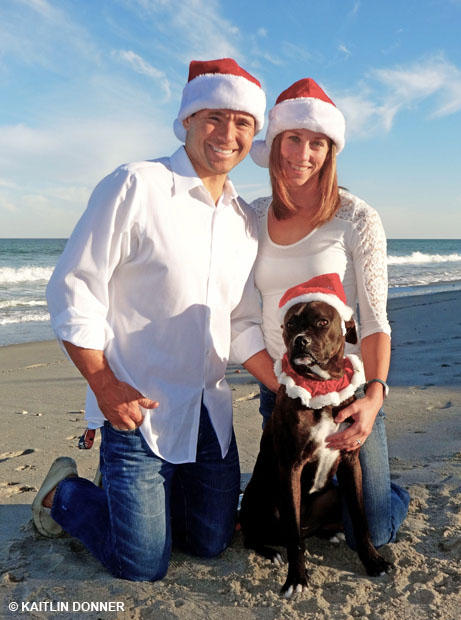
ST: How do you two support one another in your pursuit of triathlon excellence?
Kaitlin: Ed is incredibly supportive of my triathlon endeavors, and is constantly tailoring his workouts to mine so I don’t have to train solo. Since getting married 3 years ago, he has done anything and everything he can to give me the best opportunity for success, and I cannot ask for any more than that. He competes in a handful of 70.3 and Ironman events throughout the year when it doesn’t conflict, and I love attending and cheering him on there.
ST: Tell us about your primary coach and how has he or she helped you improve?
Kaitlin: I have been working with Jennifer Hutchison since switching over to triathlon from running in 2011. We have been through a lot of ups and downs throughout my career, and she understood that finishing school was a priority to me. Within the past year we have been able to do slightly more volume and along with a strong focus on strength in terms of muscle balance, core stability, and developing efficient movement patterns (I have been working with Mike Ferguson at CORA Rehab with this), while paying close attention to detail.
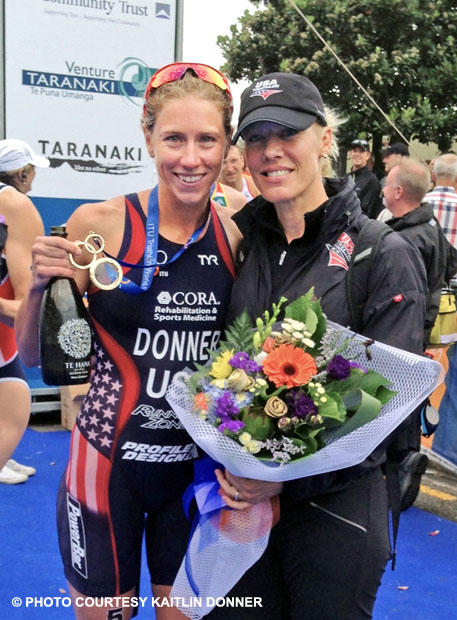
ST: Tell us how your senior elites have mentored you?
Kaitlin: All of the elite women have been very helpful with traveling and racing! During the off season I was blessed to get to train in Clermont, Florida where Jarrod Shoemaker and Alicia Kaye took me under their wing and really showed me what it meant to train and live as a professional.
ST: That was quite an exciting race at New Plymouth. What were the key moments in the swim and bike legs?
Kaitlin: The swim was quite choppy and I was a bit behind the leaders coming out of T1. I was able to bridge the gap within the first lap where about 14 or 15 of us came together and seemed to be holding about a 15 second gap on the chase pack. During the bike I focused on staying out of trouble since the roads were wet, and the course a bit technical. Once onto the run, I built into each lap like I did in Abu Dhabi (where she finished 10th) and tried to run my own race.
ST: The run at New Plymouth must have been nerve-racking. You ran a fine 16:54, but you had a Georgetown University track-trained rocket chasing you right to the finish. When did you realize Renee Tomlin was on your heels?
Kaitlin: I knew Renee was in the chase pack getting off the bike not far behind, but honestly was never focused on beating her, or anyone specific in the field. I ran my race, taking the lead with a lap to go to avoid having the race come down to a sprint with a group of very talented women. I had no idea Renee was so close until after the finish, and was thrilled that we both got to represent USA on the podium!
ST: How did you stay cool and keep your form in the finish chute?
Kaitlin: I’m glad it looked like I stayed cool. I was running for my life!
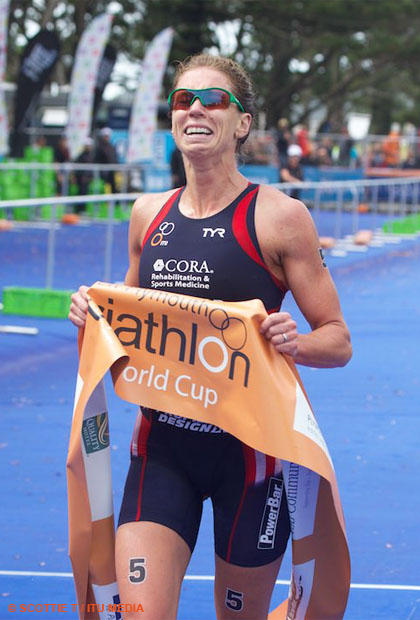
ST: What did you two say to one another after the race?
Kaitlin: We congratulated each other, thrilled to have represented USAT so well then accompanied each other to doping control. She is a great athlete and ran brilliantly.
ST: What is next? And what is your goal race this year?
Kaitlin: I will be racing Gold Coast WTS next before heading back to the states for a training block. As with most of the US athletes, my goal is to be in the best shape possible for the Rio test event in August.
Renee Tomlin
Tomlin is a 2-time All-American runner, a Big East Champion and a Georgetown University school record holder at several middle distance events.. She is also an accomplished academic who posted a 3.84 grade point average at Georgetown where she earned an undergraduate degree in French and a graduate degree in linguistics.
Slowtwitch: You are a late blooming triathlete. Tell us about your road from high school swim and run experience to Georgetown track star to New Jersey New York Track Club to your whirlwind introduction to triathlon with the to the USA Triathlon Collegiate Recruitment Program.
Renee Tomlin I first met the Collegiate Recruiter, Barb Lindquist, when I was a junior (2009) at Georgetown competing at the NCAA Outdoor Track & Field Championships. I had just missed making the final of the 1500m and found myself wandering towards the USA Triathlon tent that was perched around the track. I started chatting with Barb and we kept in touch throughout my senior year. Because I decided to pursue a 5th year of NCAA eligibility and in turn continued to run post-collegiately, I put the thought of triathlon on the back burner. It wasn't until February of 2014 that I reached back out to Barb to open a line of communication about possibilities within the sport.

ST: Why did you take five years after graduation to begin your triathlon career?
Renee: I first chatted with Barb Lindquist in college. However, five years had passed while I pursued Track & Field. It wasn't until I was ready to exit the Track & Field space that I thought: “Well, I have some unfinished business..” Friends and family always encouraged me to give triathlon a shot, but it wasn't until re-connecting with Barb and meeting Jono Hall, USAT Performance Adviser, that I decided to go “all in.”
ST: They say the one thing that can't be taught is run speed. What were some of your PRs in track?
Renee: My main event was the 1500m, in which I ran 4:08.09. [While that time is 18 seconds slower than the 1993 World Record set by China’s Qu Yunxia, and 11 seconds slower than Mary Slaney’s 1983 American record, it is 2 seconds FASTER than the 2012 London Olympics Women’s 1500 meter finals gold medalist.]
ST: What has been the greatest challenge in taking on triathlon? And how much progress have you made?
Renee: The greatest challenge in taking on triathlon was adjusting my middle distance single-sport mindset to that of the endurance multi-sport athlete. I had to re-wire how I approached running, recovery, and I have to continually convince myself to be patient on this learning curve!
ST: By the way, your 16:37 5k run at New Plymouth was faster than every WTS woman in Abu Dhabi – except for Gwen Jorgensen. How much confidence did your performance in New Plymouth give you?
Renee: 🙂 I didn't know that until now! The performance at New Plymouth definitely gave me confidence that I could make a bike pack, ride, and still get off to run. I made a couple of mistakes in Mooloolaba the weekend before New Plymouth, so I focused on all the little things — hydration, nutrition, etc. — to make sure I got off the bike with the proper amount of energy required for the run leg.
ST: Your 20k bike split at the New Plymouth World Cup was 32:31 – 24 seconds off Kaitlin Donner's split. That was almost precisely your advantage on her run. How much of that was the difference in pure bike skills – and how much was crowds and traffic?
Renee: I missed the first bike pack and rode in the chase pack, conserving as much energy as possible. I'd say the difference lies in a combination of bike skills and learning curve. I'm still processing how to race 1-2 hour races, as well as manage energy levels in the 3 legs, with emphasis on cycling.
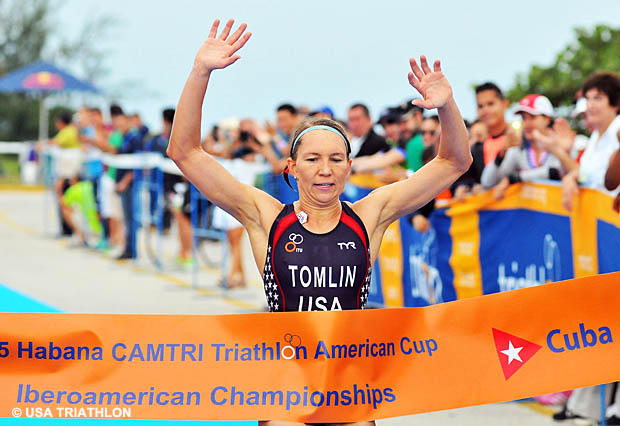
ST: Can you take us through your come from behind effort on the run? What sorts of thoughts about focus and maintaining form did you call up from your days in track?
Renee: I was just listening to my coach and the support staff for their direction on when to make moves or pick up the pace on the run. I'm still learning how to tackle a 5k, especially coming off a swim and bike, but I like to think about it as a “long 1500m.” The run course at New Plymouth was 3 laps, so I relate it to 3 “long 500s” that would make up a “long 1500m.” It's easier for me to break it down that way in order to stay engaged and to know when to make moves. In terms of run form, I heard Coach Gags from NJ-NYTC yelling: “Elbows in!” and Coach Miltenberg from my Georgetown days: “Relax your face, jaw, neck, shoulders.” But mostly I drew from Bobby McGee, USAT Performance Adviser, who offers invaluable advice on how to prepare mentally and physically for the demands of a 5 or 10K coming off of a swim and bike.
ST: When you came in range of Kaitlin, did she grab another gear to fight you off?
Renee: Kaitlin had a lead on me the entire run, down to the last couple steps before the finish. I started to kick just moments before she made a very strong, decisive move. She's a great runner and a smart racer — I look up to how she carries herself within the sport and I admire her work!
ST: The results say you fell two seconds short. How much distance was that?
Renee: Two seconds doesn't sound like a lot, especially in a race that is an hour long. But, when running, a second is a HUGE amount of time. Kaitlin had me decisively by a couple of strides.
ST: There are a lot of young U.S. women triathletes having breakthrough performances. Katie Zaferes, Jessica Broderick, Kaitlin Donner, Lindsey Jerdonek, Erin Jones – all following in the footsteps of Gwen Jorgensen and Sarah True. How does it feel to be a part of this talented group?
Renee: These are all extremely talented and skilled women who are smart competitors. Right now I'm focusing on what I can control and pushing myself to do my best. I feel very lucky to be considered a part of such a high-achieving group of athletes and peers.
ST: Which of these athletes do you train with? And where do you train?
Renee: I train with fellow newcomers Kirsten Kasper (former Georgetown teammate and 2011 NCAA Cross Country Team Champion), Dylan Sorensen (former Georgetown teammate and 2-time All-American), Nick Karwoski (Dickinson multiple-time All-American), Josh Izeuski (Florida multiple-time Track & Field Team Champion), Robby Webster (University of Washington) and Molly Higgins (Princeton). We are a part of the Collegiate Recruitment Program located in Scottsdale, Arizona.
ST: What coaches do you work with? And how have they influenced you?
Renee: I'm fortunate to work with Jarrod Evans, who came in as the Collegiate Recruitment Program coach last July. He's been critical in every aspect of my development in and outside of swim, bike, run. Jarrod has taught me how to win, how to handle mistakes, how to recover within endurance sport and how to stay patient within the process. I'm extremely grateful for his support and wouldn't be where I am today without it.
ST: Also, congratulations on your win at the historic Habana CAMTRI American Cup. You beat several top regionals talents there. Tell us how that race developed. And what did you think about the historic significance of racing in Cuba?
Renee: Thank you! Yes, the race came up as a bit of a last minute addition to the competition schedule. (Thank you, President Obama, for lifting the embargo!) We found out as a training squad that we would head over to Cuba at the end of January, about 24 hours after the news broke of the new political ties. We were all very excited and felt honored to have the opportunity to represent the USA in one of the first sporting competitions in over 50 years. I was of course excited to kick off the start of the season, but I was equally as excited to meet and greet our neighbors in Cuba.
ST: What has your switch to triathlon meant to you?
Renee: Triathlon is opening doors I couldn't quite crack in Track & Field. I finally feel like I'm in the sport I was meant to compete in all along. I'm beyond thankful that USAT has welcomed me into their community and has given me the opportunity to pursue some unfinished business.
ST: What are your dreams in triathlon?
Renee: Dreams are for sleep! I'm more of a goal-girl than a dreamer 😉 Right now my focus is on gaining valuable ITU points and on climbing the ladder. I aim to approach every race as an opportunity to build position within US and ITU rankings.

ST: Looks like you were not kidding when you said you wanted to see how things would pan out when you had some more real estate on the run. In New Plymouth you ran the 10k in 35:23 – 6th fastest competing against the best elite women runners in triathlon. And you ran just 1:13 slower than Gwen Jorgensen. How did the run feel for you? And what did it tell you about your future races in the WTS series?
Renee: The run actually felt comfortable! I was surprised how well my body reacted given the challenging bike course. I'm satisfied with this Olympic Distance opener and am looking forward to learning more and digging deeper in the next races. I have more to give in that middle and end portion of that 10K.
ST: You might say you just finished 16th. But I would point out that you finished ahead of stellar performers like Lindsey Jerdonek, Ashleigh Gentle, Emmie Charayron, Paula Findlay, Carolina Routier, Maaike Caelers, – not to forget DNFs by Lisa Norden, Rachel Klamer, Kirsten Sweetland, Anne Haug, Valentina Carvallo, and Amelie Kretz. So, is your glass half full, or half empty?
Renee: Half full, always! This is a group of extremely talented and vetted women. I feel fortunate to compete with the best!
ST: What were conditions like and how did they affect you?
Renee: The conditions were perfect. The air temperature was in the low 20s Celsius, the rain let up and the sun came out just in time for warm up and the race start. There were some slight gusts of wind, but for the majority of the race, the weather could not have been better.
ST: You gave up 1:25 to the best swimmer, and 3:08 to the best bike split. Talk about how each leg went for you – and how will you go about improving?
Renee: I'd have to give myself a 2/5 on the swim, 3.5/5 on the bike and 4/5 on the run. Compared to past races, I was not urgent enough getting out in the swim, which made for poor positioning. I am, however, proud of my bike effort given the challenging nature of the course. Likewise, I am satisfied with this opening 10K effort and in pacing it evenly. Each course and each race is different. But, speaking generally on improvement, I know it is imperative to get out hard in the swim in order to solidify proper positioning on the bike leg. Heading into the run, it's important to gauge energy levels and stay confident that the body will respond to pressing the pace the second half of the race.
ST: What do you see in your future in triathlon?
Renee: For now, I'm living in the moment and enjoying the process. I'd be lying if I said I wasn't thinking a bit about the future, but there are still so many variables that it's tough to give one straight answer. What I do know is that I see a lot of work to be done that will pay off in due time!


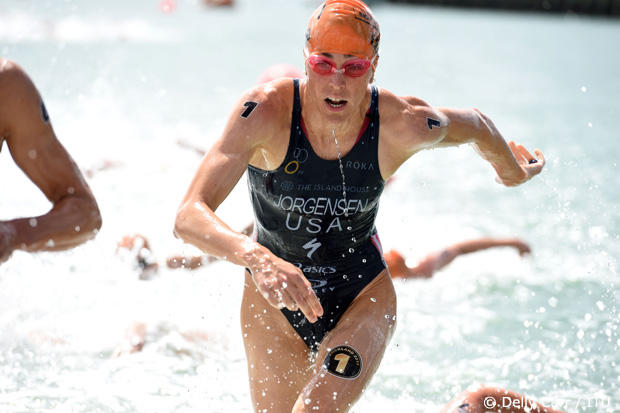
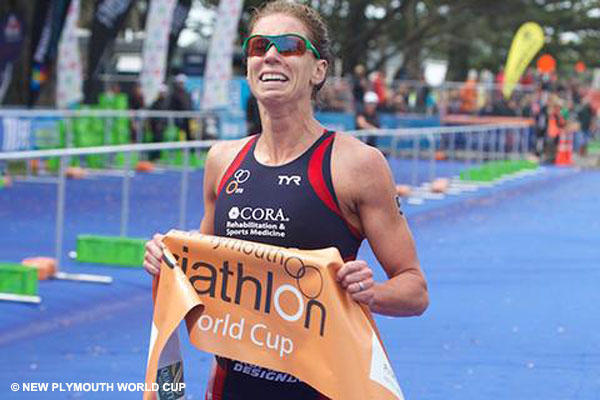
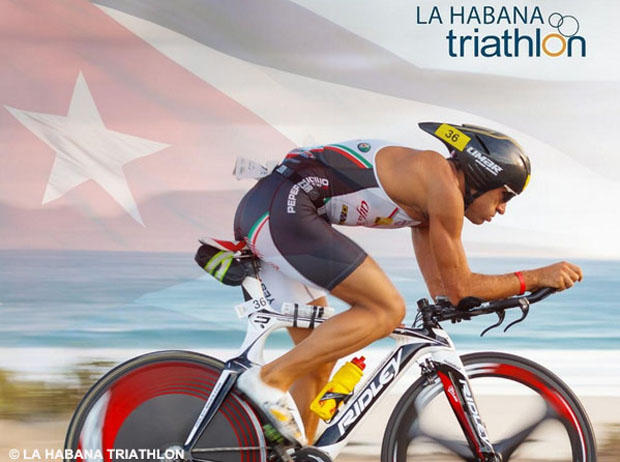
Start the discussion at slowtwitch.northend.network